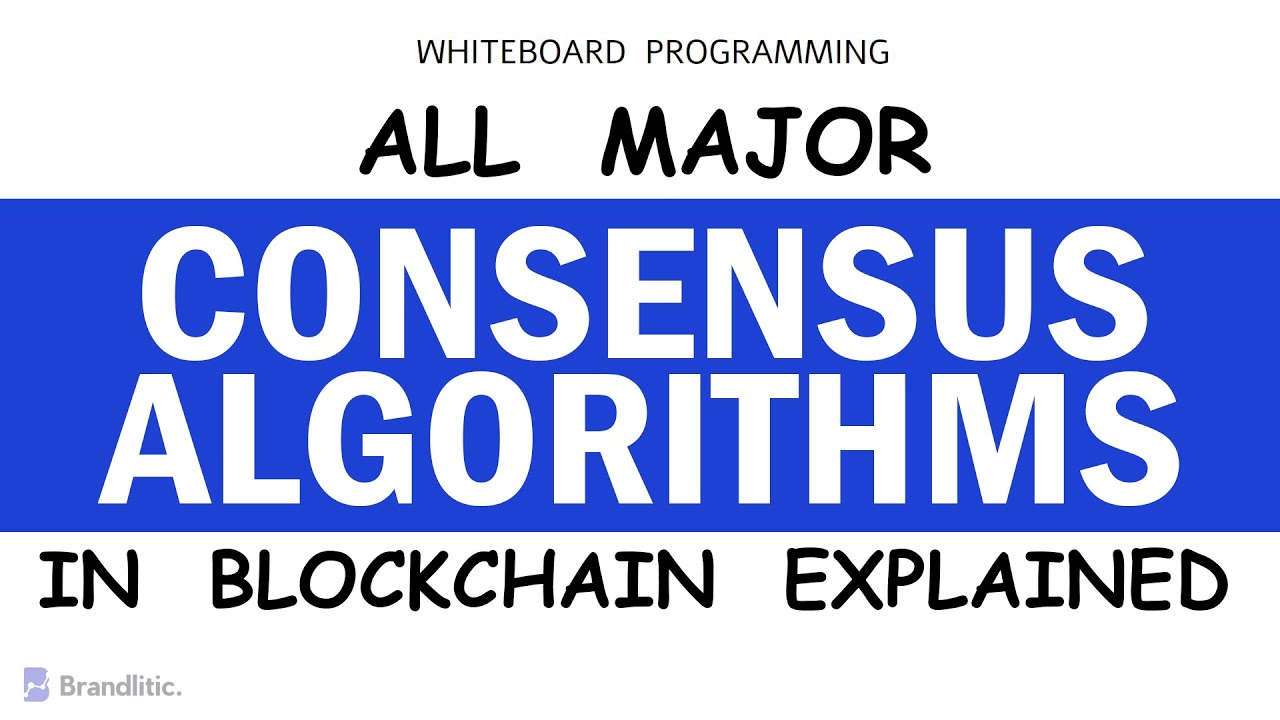Proof-of-Stake (vs proof-of-work)
Summary
TLDRThis video explains the difference between proof-of-work (PoW) and proof-of-stake (PoS) consensus algorithms in cryptocurrencies. PoW, used by Bitcoin, consumes significant energy and leads to centralization through mining pools. PoS, on the other hand, randomly selects validators based on their stake, reducing energy use and encouraging decentralization. However, PoS also has potential issues, like favoring wealthier participants and the risk of 51% attacks. The video also highlights real-world PoS implementations, such as Peercoin, Lisk, Nxt, Ethereum's Casper, and Cardano's Ouroboros.
Takeaways
- 🔋 Cryptocurrencies like Bitcoin use significant energy due to the proof-of-work (PoW) algorithm.
- 💡 PoW was introduced to secure networks by requiring nodes to solve cryptographic puzzles.
- 💻 Mining for PoW requires substantial computing power, leading to large mining farms and high energy consumption.
- 🌐 Mining pools centralize control in PoW systems, posing risks to decentralization.
- 🏛 Proof-of-stake (PoS) is an alternative to PoW, using a different method for reaching consensus.
- 🏦 PoS requires validators to stake coins, with the size of the stake influencing selection probability.
- ⚖️ PoS aims to be more energy-efficient and decentralized than PoW, but it also has potential issues like favoring the rich.
- 🔒 PoS validators can lose their stake for approving fraudulent transactions, incentivizing honest behavior.
- 🌍 Several cryptocurrencies use PoS, and Ethereum and Cardano are exploring it with systems like Casper and Ouroboros.
- 🚧 PoS still has challenges, including mitigating risks of centralization and ensuring reliable validator participation.
Q & A
What is the proof-of-work algorithm and why does it require a lot of energy?
-The proof-of-work algorithm is a consensus mechanism used in cryptocurrencies like Bitcoin, where miners solve cryptographic puzzles to validate transactions and secure the network. It requires a lot of energy because solving these puzzles demands significant computational power.
Who introduced the concept of proof-of-work and when?
-The concept of proof-of-work was first introduced in 1993 to combat spam emails and was formally named 'proof-of-work' in 1997.
Why did Satoshi Nakamoto choose proof-of-work for Bitcoin?
-Satoshi Nakamoto chose proof-of-work for Bitcoin to reach consensus between many nodes on a network and to secure the Bitcoin blockchain.
How do mining pools impact the decentralization of the Bitcoin blockchain?
-Mining pools, where miners combine their hashing power and distribute rewards, can centralize the mining process. Large mining pools control significant portions of the Bitcoin blockchain, which can lead to centralization and pose risks to network security.
What is proof-of-stake and how does it differ from proof-of-work?
-Proof-of-stake is a consensus mechanism where validators are chosen to create new blocks based on the amount of cryptocurrency they hold and are willing to 'stake' as collateral. Unlike proof-of-work, which requires energy-intensive mining, proof-of-stake relies on an election process, making it more energy-efficient.
How does proof-of-stake reduce energy consumption compared to proof-of-work?
-Proof-of-stake reduces energy consumption because it doesn't require all nodes to compete in solving cryptographic puzzles. Instead, a single validator is chosen to validate the next block, significantly lowering the computational and energy requirements.
What role does the stake play in the proof-of-stake algorithm?
-In proof-of-stake, the stake acts as a security deposit. Validators must deposit a certain amount of coins, and the size of the stake determines their chances of being chosen to forge the next block. Validators risk losing their stake if they approve fraudulent transactions.
What is a 51% attack and how does it differ in proof-of-work and proof-of-stake systems?
-A 51% attack occurs when a single entity controls more than 50% of the network's power, enabling them to manipulate the blockchain. In proof-of-work, this means controlling 51% of the hashing power. In proof-of-stake, it means owning 51% of the total staked coins, which is more impractical due to the high cost of acquiring such a majority.
What are some challenges or risks associated with proof-of-stake?
-Challenges with proof-of-stake include the potential for wealthier participants to dominate the validation process, the risk of validators not performing their duties, and the need for careful selection of validators to prevent centralization. Mitigating these risks requires ongoing research and development.
Can you provide examples of cryptocurrencies that use proof-of-stake?
-Examples of cryptocurrencies that use proof-of-stake include Peercoin, Lisk, Nxt, Ethereum (working on implementing it with Casper), and Cardano with its Ouroboros algorithm.
Outlines

Cette section est réservée aux utilisateurs payants. Améliorez votre compte pour accéder à cette section.
Améliorer maintenantMindmap

Cette section est réservée aux utilisateurs payants. Améliorez votre compte pour accéder à cette section.
Améliorer maintenantKeywords

Cette section est réservée aux utilisateurs payants. Améliorez votre compte pour accéder à cette section.
Améliorer maintenantHighlights

Cette section est réservée aux utilisateurs payants. Améliorez votre compte pour accéder à cette section.
Améliorer maintenantTranscripts

Cette section est réservée aux utilisateurs payants. Améliorez votre compte pour accéder à cette section.
Améliorer maintenantVoir Plus de Vidéos Connexes

All Major Blockchain Consensus Algorithms Explained | Consensus Mechanism in Blockchain

What is Proof of Work? (Cryptocurrency Explanation)

What is Proof of Stake - Explained in Detail (Animation)

Pengenalan Blockchain Technology di Balik Cryptocurrency

Proof of Work vs Proof of Stake: What's Better? | 3-min crypto

Was ist Staking? Proof of Stake einfach erklärt
5.0 / 5 (0 votes)
